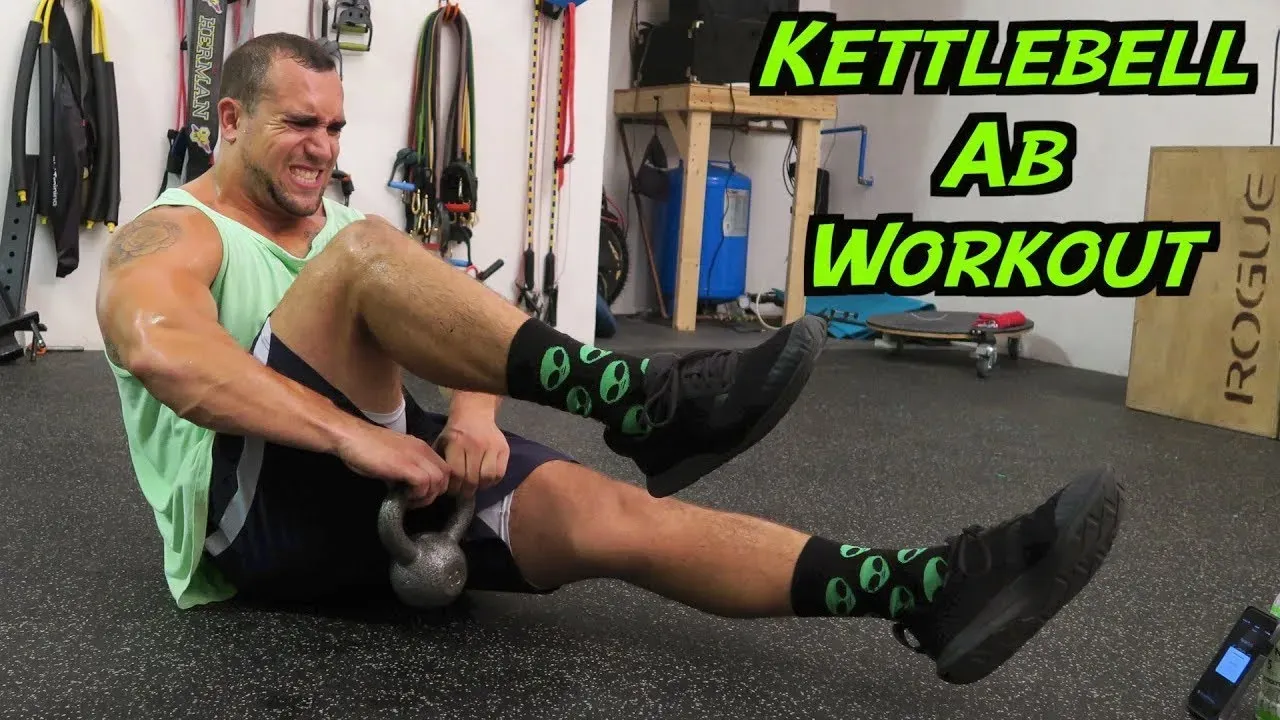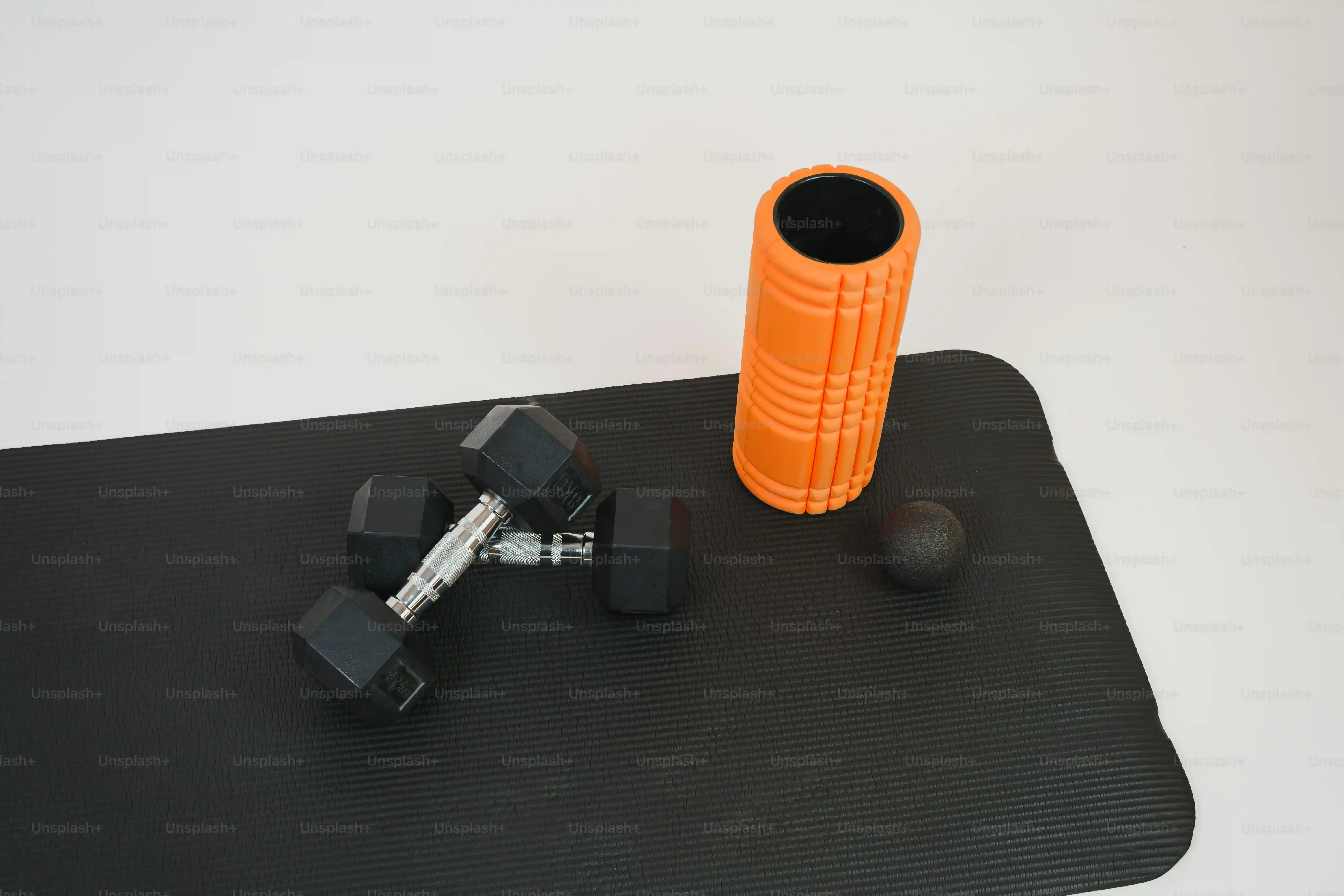Table of Contents
Let's be honest, crunching away on the floor can feel like watching paint dry. You do a hundred reps, feel a slight burn, and wonder if you're actually building anything beyond a sore neck. If your current core routine feels stagnant, or you're just looking for a serious upgrade from bodyweight moves, it's time to consider a new weapon: the kettlebell.
Why Your Ab Workout Needs a Kettlebell

Why Your Ab Workout Needs a Kettlebell
Beyond the Basic Crunch
Look, everyone starts somewhere. Maybe you hammered out crunches and planks until you were blue in the face. That's fine for building some initial awareness. But let's be real, your core does way more than just flex or stay rigid in a straight line. It stabilizes your spine, transfers force between your upper and lower body, and keeps you from folding like a cheap lawn chair when you're doing anything remotely athletic. A kettlebell introduces an unstable, offset load. This forces your core muscles – all of them, not just the ones you see in the mirror – to work overtime just to keep you balanced and controlled. It's less about isolating a single muscle and more about teaching your core to function as a cohesive unit under duress. This dynamic challenge is a far cry from lying on your back and lifting your shoulders an inch off the floor.
Dynamic Stabilization Under Load
Think about swinging a kettlebell, performing a Turkish Get-Up, or even just holding one off-center during a squat or lunge. That weight isn't sitting neatly in the middle; it's pulling and shifting. Your core, from your deep transversus abdominis to your obliques and lower back muscles, has to constantly adjust and stabilize against that moving force. This isn't just static holding; it's active, reactive stabilization. This kind of work builds functional strength that translates directly to real-world movements and other lifts. It teaches your core to brace effectively when you're under load, which is crucial for preventing injuries and generating power. That's the kind of core strength that actually matters, not just how many crunches you can rattle off. This is why your ab workout needs a kettlebell.
So, what kind of core benefits are we actually talking about when you integrate a kettlebell?
- Improved rotational strength and stability
- Enhanced anti-extension and anti-flexion capabilities
- Better intermuscular coordination
- Increased core endurance under dynamic loads
- Greater carryover to other strength exercises
Essential Ab Workout with Kettlebell Exercises

Essential Ab Workout with Kettlebell Exercises
Getting Started: Foundational Kettlebell Core Moves
Alright, so you're sold on the idea. You've got your kettlebell, maybe staring at it wondering if it's secretly judging your life choices. Don't just pick it up and start swinging wildly. We need to build a base. The first step in an effective ab workout with kettlebell is mastering some foundational moves that teach your core what stability under load actually feels like. Think of moves like the Kettlebell Goblet Squat – holding the weight at your chest forces your core to stay locked in to keep you upright. Or the Kettlebell Deadlift; it's not just about your legs and back, your core acts as a rigid bridge between the weight and the floor. Then there's the Suitcase Carry, which sounds simple, but walking with a heavy kettlebell in one hand will light up your obliques like a Christmas tree trying to keep you from leaning over. These aren't flashy, but they build the essential strength and awareness you need before you tackle more complex movements.
Turning Up the Heat: Dynamic Kettlebell Core Challenges
Once you've got the basics locked down, it's time to introduce some dynamic challenges into your ab workout with kettlebell. This is where the magic really happens. Exercises like the Kettlebell Swing, often seen as a hip hinge movement, actually demand tremendous core bracing and anti-extension strength at the top. The Turkish Get-Up? That's a full-body ballet with a kettlebell, and your core is the star, providing stability through every single transition from lying down to standing up and back again. Even moves like Kettlebell Halos or Russian Twists, when done correctly with control and not just flailing, target rotational strength and anti-rotation. These movements aren't just about moving the weight; they're about resisting unwanted movement in your spine while the weight is in motion. This is where you build a core that's not just strong in one plane, but truly functional and resilient.
Ready to add some of these to your routine? Here are a few must-try exercises:
- Kettlebell Goblet Squat
- Kettlebell Suitcase Carry
- Kettlebell Swing
- Turkish Get-Up (start light!)
- Kettlebell Halo
Building Your Routine: Sample Ab Workout with Kettlebell

Building Your Routine: Sample Ab Workout with Kettlebell
Starting Smart: Principles of a Solid Routine
you've got the moves down, or at least you've watched the videos a few times. Now, how do you actually put it all together into a useful ab workout with kettlebell? First off, ditch the idea that more is always better. Your core gets hit during pretty much every kettlebell exercise, so you don't need a separate, hour-long core session every day. Think quality over quantity. Focus on selecting a few key exercises that challenge your core in different ways – maybe one anti-extension, one anti-rotation, and one dynamic stability move. Start with a weight you can control *perfectly* through the full range of motion. Bad form with a kettlebell is a fast track to feeling like you lost a fight with a small, heavy object. Aim for consistency, not just intensity. Two or three focused sessions a week are far better than one epic, soul-crushing workout that leaves you sidelined for days.
Putting It Together: A Sample Structure
So, what could a basic ab workout with kettlebell look like? You could tack it onto the end of your main workout, or do it as a short, standalone session. Here's a simple template to get you started. Remember, this is just a suggestion, feel free to swap exercises based on your comfort and the kettlebells you have available. The goal is to pick exercises that feel challenging but allow you to maintain excellent form. Don't rush through it; control the weight, control your body. That's where the core work really happens.
Exercise | Sets | Reps/Duration | Focus |
|---|---|---|---|
Kettlebell Goblet Squat | 3 | 8-12 reps | Anti-extension/overall stability |
Kettlebell Suitcase Carry | 3 | 30-40 seconds per side | Anti-lateral flexion |
Kettlebell Halo | 3 | 8-10 reps per direction | Rotational control/stability |
Consistency and Progression: Making it Stick
Building a strong core with a kettlebell isn't a one-and-done deal. It requires showing up consistently. Don't get discouraged if you can't do a perfect Turkish Get-Up on day one. Nobody can. Start with regressions, lighter weights, or fewer reps. As you get stronger and more comfortable, you can progress by increasing the weight, doing more reps, adding sets, or moving to more challenging variations of the exercises. Maybe you switch from a Suitcase Carry to a Rack Carry (kettlebell held at shoulder). Or you add a press at the top of your Goblet Squat. Listen to your body, but push yourself just enough to make progress. That steady, consistent effort is what truly builds a resilient ab workout with kettlebell routine over time.
Skipping the Snags: Common Kettlebell Core Mistakes

Skipping the Snags: Common Kettlebell Core Mistakes
Avoiding the Pitfalls of Kettlebell Core Training
Alright, you're hyped about your new ab workout with kettlebell, maybe you've even tried a few swings or carries. That's great! But before you go full tilt and risk tweaking something, let's talk about the classic screw-ups people make when using kettlebells for core work. The biggest one? Treating the kettlebell like a dumbbell. You can't just go through the motions; the offset weight and dynamic nature demand respect and focus. Ignoring proper bracing is another express train to injury town. If your core goes soft during a swing or a get-up, your spine takes the hit. Also, don't just pick the heaviest bell you can barely lift. Ego lifting with kettlebells, especially for core-centric moves, means your body compensates with poor form, negating the core benefits and setting you up for pain. It’s not about how much weight you move, it’s about how well you control it.
- Rounding your back during swings or deadlifts
- Letting your core go slack under load
- Using momentum instead of muscle control
- Picking a weight that's too heavy for clean form
- Rushing through movements like the Turkish Get-Up
Wrapping Up Your Kettlebell Core Work
So, there you have it. Ditching the endless crunches for a dynamic ab workout with kettlebell isn't just a trend; it's a smarter way to train your core. You've seen how these exercises demand more than just isolated muscle contractions, building stability and power that translates directly to real-world strength and athletic performance. It takes focus, proper form, and consistency, but the payoff is a resilient, functional core that's ready for whatever life throws at it. Keep practicing, keep challenging yourself, and you'll feel the difference.